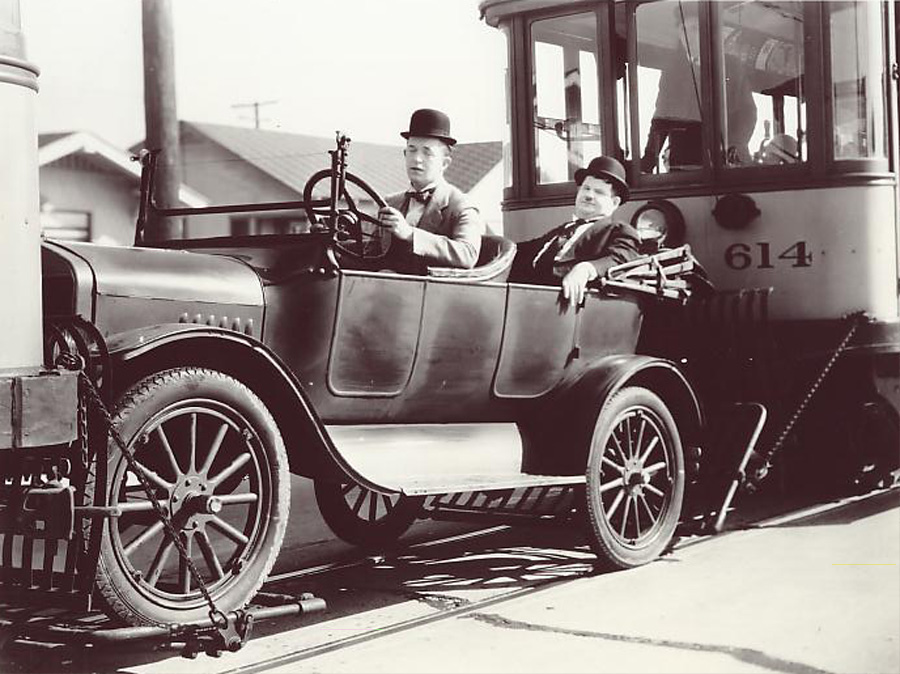How LED Lights Are Making Our Highways And Byways Safer
Posted by Amit Soni on 16th Jan 2016

The Tin Lizzie, better known as the Model ‘T’ Ford, was the car of choice of black and white comedy duo Laurel and Hardy and, by the time production ceased in 1927, it had secured its place in people’s hearts and in the list of the top ten selling cars of all time.
Be that as it may, by today’s standards, the car was a deathtrap. It had neither seatbelts nor speedometer, but in those days these omissions weren’t really a problem as the car couldn't go any faster than 40 mph. Plus, back then, there was far less traffic on the roads. Nevertheless, Stan and Ollie still managed to saw theirs in half in their 1933 film Busy Bodies!
The Roads Are Becoming Safer
Nowadays road-safety is no laughing matter. With more traffic on the roads than ever before, the incentive to create a safe environment on and around our highways and byways has never been greater. Just last year more than 30,000 people were injured in road traffic-related accidents in the UK alone.
But things do seem to be getting better, as government figures show that actual fatalities amongst all road-user groups have fallen from 3,409 in 2000 to 1,713 in 2013.
A great deal of credit for this reduction must go to the car manufacturers, as automotive design and vehicular safety have developed and improved radically in tandem over the years.
Modern cars feature seatbelts, airbags, anti-lock braking systems and crumple zones, all of which are designed to get us from A to B in one piece.
The latest development is 'intelligent crash-avoidance' technology which manufacturers believe has brought them closer than ever to a 'crash-proof' car.
However, sometimes the simplest things can save lives. Seeing and being seen is a fundamental element of road safety, and the earlier a driver can see a pedestrian, the more chance they have of avoiding an accident.
LEDs Are Better For Road-Safety
Automotive headlamp applications using LEDs have been undergoing active development since 2004, and in that year, Audi’s A8 W12 became the first production cat to utilise the technology.
In 2008, European legislation required that dedicated DRLs (Daytime Running Lights) designed to come on automatically when the engine is started, be fitted to all new passenger cars and small delivery vehicles, with trucks and buses to follow by August 2012.
According to the European Commission, this measure could prevent as many as 2000 fatalities every year on European Roads and, by 2020, the total number will hopefully be halved as a result of it.
LED lights are especially beneficial in terms of safety, as they activate a fraction of a second faster than conventional lights. This makes them the preferred option for use as brake lighting, which relies on fast response times from the driver.
Furthermore, LED lights can be linked to satellite navigation systems and programmed to come on automatically at crossroads and interchanges, where extra concentration is required.
Due to the fact that LEDs consume only a fraction of the electricity needed by traditional headlights, they're being used increasingly as DRLs and also as other lights on vehicles.
Their low power requirement, which is just 10% of a traditional headlight’s, also means the vehicle uses less fuel, which has a fortuitous environmental effect, in that C0² emissions are reduced by around 3%.
Better For Street Lighting Too
Street lighting is also benefitting both safety and economy-wise from the switch to LEDs. With London adopting LEDs for their 6,200 traffic signals from 2014, energy savings of 60% have been achieved.
Substantial savings in terms of replacements and maintenance costs were also reported, as the conventional traffic lights used to be replaced once a year, but with the new LED lighting with its average 50,000 hour life-expectancy in place, changes would only be necessary once every 17 years.
Driving at night is more dangerous and, despite only one quarter of car-travel being undertaken between the hours of 7pm and 8am, 40% of fatal and serious traffic-related injuries occur between these hours.
A Department of Transport study in 2003 found 73% of respondents concluding that better street lighting would improve child safety and 63.8% agreed that improved street lighting would lead to fewer accidents on the roads.
A further road-safety study undertaken in 2015 by the London School of Hygiene and Tropical Medicine found that there has been a trend to either dim or completely switch off street lighting to save money.
Emerging technologies, such as LED lighting and associated computerised central management systems, have created opportunities for local authorities to adapt their street lighting strategies in ways that can reduce energy costs and contribute to significant reductions in carbon emissions.
This has led to strategies being developed countrywide to replace traditional sodium lamps, emitting orange and yellow light with more energy-efficient dimmable LEDs which produce whiter, more penetrative light.
LEDs are set to revolutionise not only domestic and commercial lighting applications, but also road-safety in all its incarnations, so why not check out the Wholesale LED Lights website to see what it can do for you?





